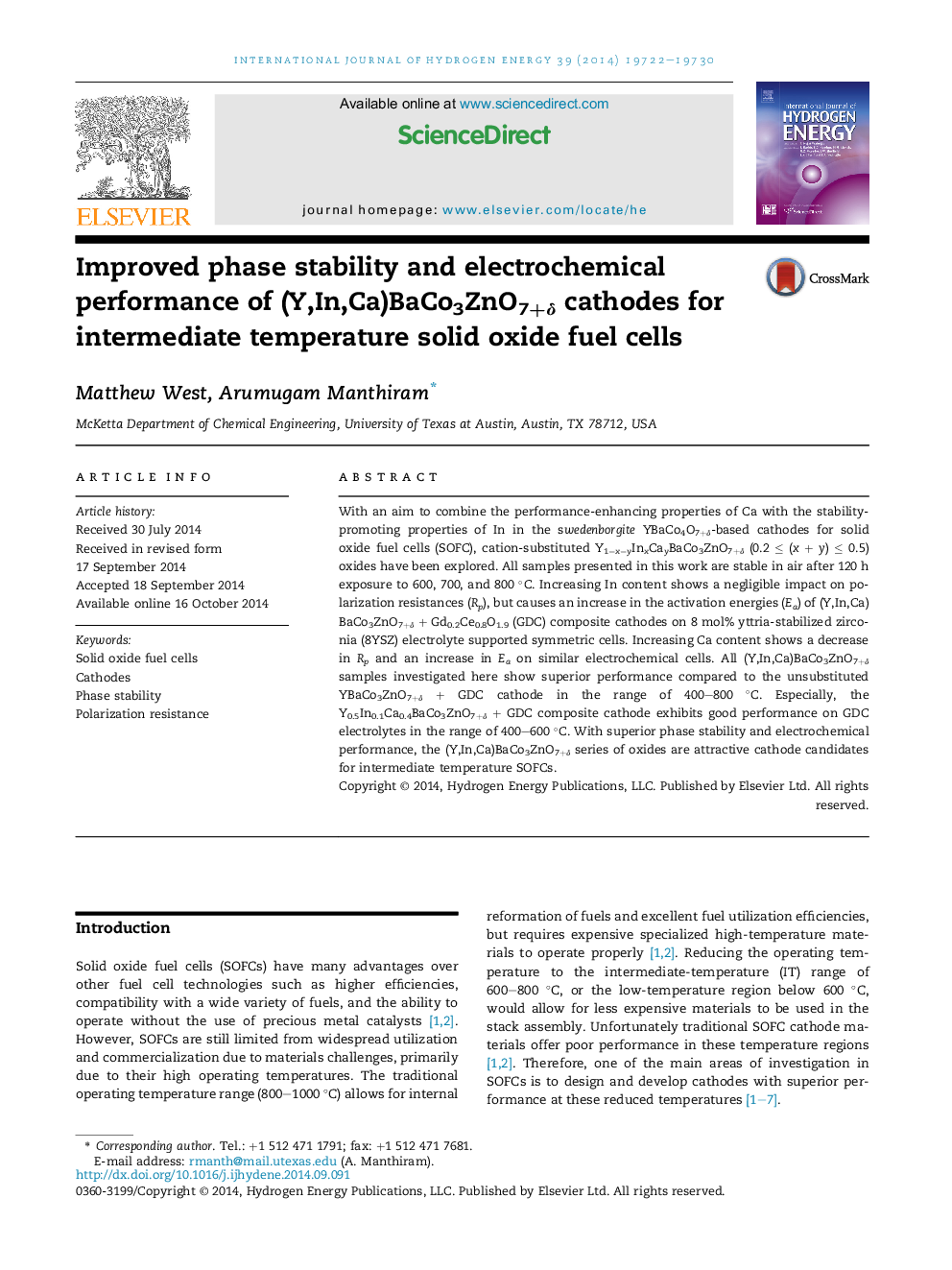| Article ID | Journal | Published Year | Pages | File Type |
|---|---|---|---|---|
| 1280724 | International Journal of Hydrogen Energy | 2014 | 9 Pages |
•Increasing Ca in (Y,In,Ca)BaCo3ZnO7+δ improves electrochemical performance.•Presence of as small as 0.1 In prevents phase decomposition in RBaCo3ZnO7+δ oxides.•(Y0.5In0.1Ca0.4)BaCo3ZnO7+δ composite cathode exhibits superior electrochemical performance.
With an aim to combine the performance-enhancing properties of Ca with the stability-promoting properties of In in the swedenborgite YBaCo4O7+δ-based cathodes for solid oxide fuel cells (SOFC), cation-substituted Y1−x−yInxCayBaCo3ZnO7+δ (0.2 ≤ (x + y) ≤ 0.5) oxides have been explored. All samples presented in this work are stable in air after 120 h exposure to 600, 700, and 800 °C. Increasing In content shows a negligible impact on polarization resistances (Rp), but causes an increase in the activation energies (Ea) of (Y,In,Ca)BaCo3ZnO7+δ + Gd0.2Ce0.8O1.9 (GDC) composite cathodes on 8 mol% yttria-stabilized zirconia (8YSZ) electrolyte supported symmetric cells. Increasing Ca content shows a decrease in Rp and an increase in Ea on similar electrochemical cells. All (Y,In,Ca)BaCo3ZnO7+δ samples investigated here show superior performance compared to the unsubstituted YBaCo3ZnO7+δ + GDC cathode in the range of 400–800 °C. Especially, the Y0.5In0.1Ca0.4BaCo3ZnO7+δ + GDC composite cathode exhibits good performance on GDC electrolytes in the range of 400–600 °C. With superior phase stability and electrochemical performance, the (Y,In,Ca)BaCo3ZnO7+δ series of oxides are attractive cathode candidates for intermediate temperature SOFCs.
